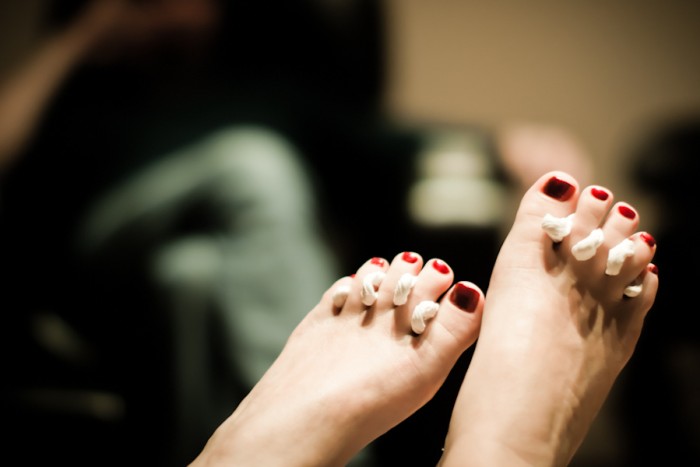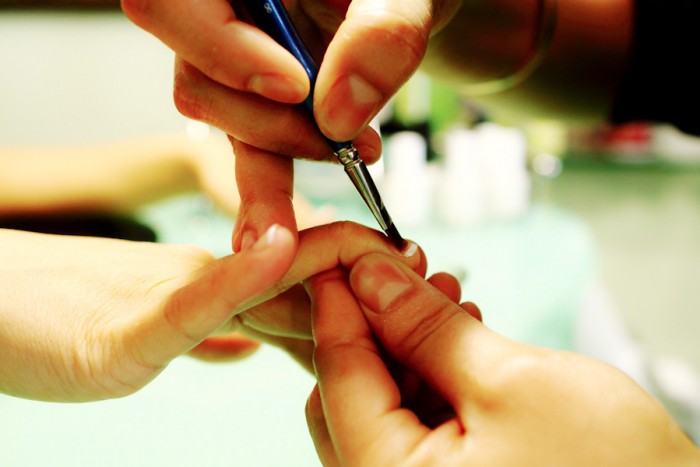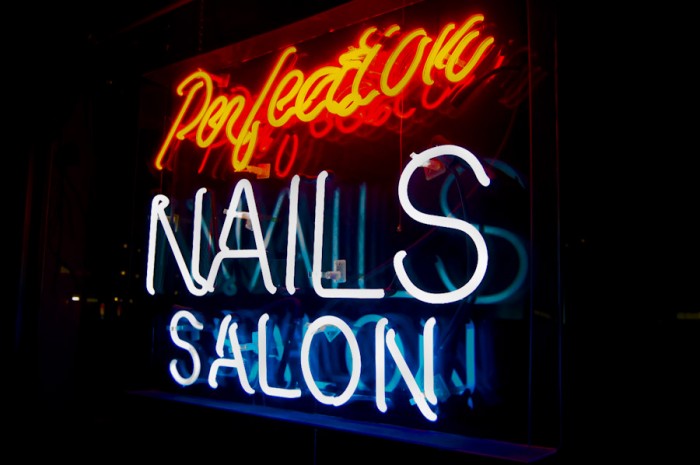
Touching other people’s feet all day may sound bad enough, but recent reports about the dangers and abuses facing nail technicians have painted the industry with an ugly brush.
A May 7th New York Times investigation titled “The Price of Nice Nails” reported that Vietnamese nail beauticians in New York City endure abuse, exploitation, and racism. A follow up the next day tied exposure to nail products to miscarriages, cancer and other ailments.
The New York Times also reported that initial inspections conducted by the state’s Labor Department found 29 salons were guilty of 116 different wage violations.
So are the women and men working in your neighborhood nail salon in the Northwest being exploited or poisoned by chemicals?
“I don’t think the same is true in Seattle,” said Holly Nguyen, a technician at a nail spa in downtown Seattle, who asked that her employer not be named. “I am personally very happy with my job, so I can’t really complain.”
The increasing popularity of nail art and weekly fillings have turned doing nails into a very lucrative business. But the Occupational Safety and Health Administration reports that nail technicians face health risks like potential viral infections, working with toxic chemicals, and straining muscles due to remaining in awkward positions for a long time.
“You really don’t think about these things when you get your nails done,” said Liliana Palacios, 21, who visits different Seattle nail salons based on GroupOn deals about twice a month. “Most girls consider it such a crucial part of our life. To some it’s like a necessary errand.”

The North American Hazardous Materials Management Association identifies the most dangerous chemicals in use by nail technicians to be methyl methacrylate and ethyl methacrylate, known to cause asthma and irritate the skin, formaldehyde, a carcinogen, phthalates, an endocrine disruptor, and solvents such as toluene.
In 2007 the EPA gave a $100,000 grant to two nonprofit groups to help Seattle-area nail salons confront the health hazards in the industry and find non-toxic alternatives to those chemicals.
“I am aware of the risks. Any job that involves working with chemicals is going to have risks associated with it,” said Nguyen, who’s worked in the industry for seven years. “But we are thoroughly trained on how to use the products. We wear masks and gloves the entire time. I personally don’t sit there and inhale the fumes.”
Nguyen said that most salons and spas take extra care to have good ventilation because they do not want the customer to get a whiff of pungent chemicals when they enter.
“You also have to be fully licensed to work here,” she said.
Washington’s Department of Licensing provides guides and resources for cosmetologists and estheticians interested in becoming licensed. Apart from distinct fees, the licensing department requires the completion of a 750 hour course for a basic esthetician license, an additional 450 hour course for a master license, and a 1200 hour master esthetician course for a combined license.
Nguyen said every salon she has worked for in the state of Washington has held their employees to strict licensing rules.
The King County office of Public Health website identifies nail salons as hot spots for human trafficking, and anti-trafficking advocates often include manicurists on their list of those vulnerable to labor expectation. But so far in Washington there hasn’t been a high profile trafficking case tied to nail salons.

Nails Magazine published 2012-2013 Industry Statistics reporting that as of 2012, there were 7,300 nail technicians and 1,334 nail salons in Washington.
The report said 48 percent of nail industry technicians in the United States are Vietnamese, making it the “most consistently growing” ethnic group working in the nail industry. That’s almost certainly true in Seattle, which has one of the biggest Vietnamese populations in the nation, according to the US Census.
So are cheap mani-pedis synonymous with labor exploitation of immigrant workers? That seems to be the case in New York City, the “manicure capital” of the nation, as the New York Times called it, where getting your nails done is a more frequent habit.
But in Seattle, prices tend to be a little higher and any big expose of widespread labor violations is yet to come.
“In Seattle, I think getting your nails done is still somewhat of a treat,” Nguyen said. “It’s much more affordable than it used to be, but most people who do it still want to feel pampered. I guess it really all depends on where you go.”


Thank you so much for sharing this Amazing piece of information regarding to best beauty tips
Most of Vietnamese Manicurists don’t speak/ read English fluently. They are working hard but be underpaid. They don’t want to complain about that unfair thing to the Department of Labor because they’re afraid of loosing their job.
I am hoping we could do more things to help them.